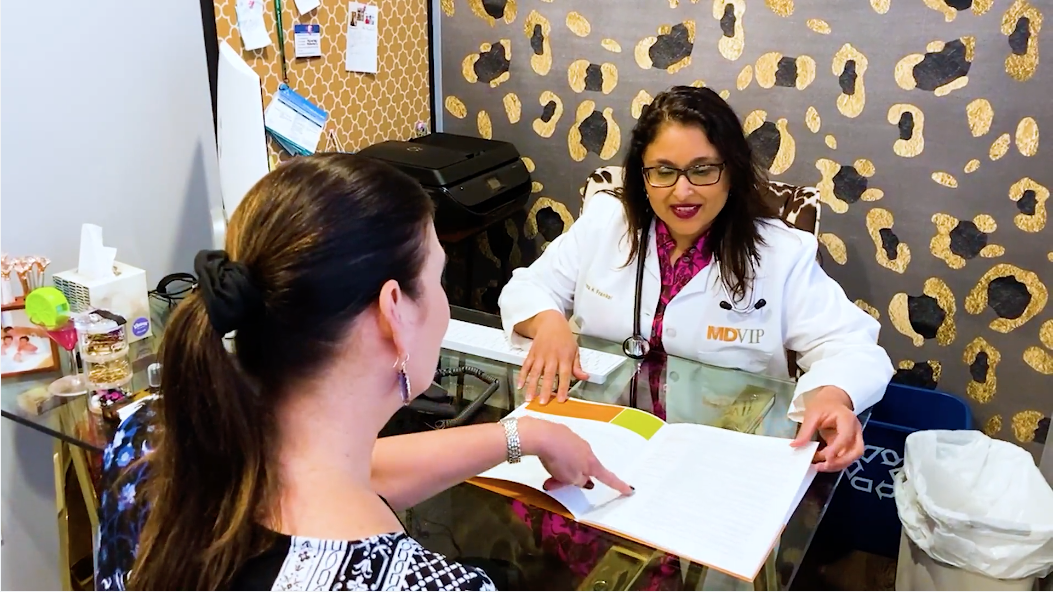How to Improve Communications with Your Primary Care Doctor

When the doctor-patient relationship works, patients experience better health outcomes. Research shows when patients are happier and reassured, they understand their health challenges and available treatments, and are more likely to adhere to doctors’ orders.
Doctor-Patient Communication
Good communications between doctors and their patients also reinforce “patients' self-confidence, motivation, and positive view of their health status,” according to multiple studies1.
Unfortunately, the inverse is also true. When communications between physicians and their patients are not good, it can lead to patient dissatisfaction, non-compliance and worse – medical error.
In one recent survey of patients, more than 70 percent said they experienced a lack of compassion when speaking with a medical professional and said they always felt rushed by their doctor. Nearly two-thirds said they have left a doctor’s office without having their questions answered, and 40 percent said their doctors weren’t good at communicating.
So, what do you do if you and your doctor aren’t communicating well?
Barriers to Good Communication
Let’s start with why there may be a communication problem in the first place. Today’s primary care environment doesn’t often allow for leisurely conversations between patients and doctors. Plus, there are other distractions like technology that may make detailed exchanges more difficult. And patients don’t always know the medical provider they’re seeing – and the medical provider, whether a doctor, nurse practitioner or physician assistant, doesn’t know them.
Here are the communication barriers highlighted by research:
Lack of Relationship/Knowledge of Patient
Sometimes doctor-patient relationships fail because there is no relationship. Your doctor may not know you beyond the name on your chart. He or she may see thousands of patients, or your primary care doctor may be just one of several physicians you see. Many Medicare patients, for example, see more than one primary care provider each year. Or your provider may not be a doctor at all, but one of several medical extenders employed by your practice to see patients.
Unless you’re seeing the same physician year after year, it’s hard to form a partnership, which can lead to a disconnect when information is exchanged. (Studies show this continuity makes a difference in healthcare outcomes.) Some patients may hesitate to ask all the questions they came to the doctor for. Others may have trouble describing their main health issue. When doctors have time to get to know patients, they recognize these challenges to communication and change their approach. But when they don’t know patients, they may make assumptions that hinder care and communications.
This is especially true for older patients, who may not understand complicated instructions or diagnoses2. When doctors don’t know their patients well, they may also miss how much patients actually understand, which can lead to confusion.
Physician Bias
Research has also indicated communication bias from physicians, especially around gender and ethnicity, which can lead to different treatments. Doctors, for example, may not order the same cardiovascular tests for women they do for men, even when the same symptoms are present. Or they may order less pain medication for women than men. Other research has found that doctors may afford African American patients less time to speak, which means patients may not get all their questions answered.

Lack of time
The main barrier to communication between patients and doctors is time — from primary care visits to hospital stays, research shows. In most traditional primary care practices, physicians see dozens of patients a day – and may have little more than a few minutes with their patients. This may not allow for lifestyle coaching, detailed explanations or many patient questions.
Physicians may also use patient time to enter information into an electronic health record, which can make it hard to really develop a relationship where communication flows freely — especially if he’s hunting and pecking at a keyboard while you’re spilling your health concerns.
How to Improve Doctor-Patient Communications
If your doctor or provider isn’t communicating well, there are steps you can take to improve the situation. As a patient, you bear some responsibility for communicating. But being prepared before your appointment is key. Start by following these tips:
- Bring a list. Before you go to an appointment with your physician, write down all your symptoms and questions. This will help you communicate better with your medical provider. And don’t forget to bring that list with you to the appointment.
- Be thorough and honest. Being honest with yourself and your provider is important. If you’ve stopped taking medication, for example, it’s important you share this with your doctor. If you’ve made other changes – like starting a new exercise class — or if you’re drinking more alcohol or feeling more stressed, it’s important to note these changes and share them with your doctor.
- Don’t minimize symptoms. It’s important that you’re also honest about your symptoms. Don’t play them down. If you’re not getting enough sleep, don’t tell your doctor it’s not a big deal. It is. Minimizing a symptom may make it easier for your doctor to ignore it or play it down.
- Speak up. Make sure you communicate your concerns. Your doctor may jump to conclusions if you fail to state your worries up front at the beginning of an appointment.
- Take notes and listen. Doctors can speak fast and use words you may not understand. Take notes or record the conversation with your phone. The recording or notes will help you remember what was said after the appointment. If your doctor uses a term you don’t understand, interrupt and ask him to explain it. Don’t let embarrassment get in the way of communication.
- Advocate for yourself. If you’re not comfortable advocating for yourself, bring a friend or family member to your appointment to help.
You should also give your physician the same respect that you expect from him. Show up for appointments on time, pay attention during your visits and follow his or her instructions.
Is It Time to Cut Bait?
Even if you do all this, you may still not overcome the communication barrier3. If you keep running into that barrier, it may be time to find a new primary care physician.
But before you give up, try these tips:
- Set up a meeting or conversation with your physician to discuss your concerns.
- Send an email or letter detailing your concerns.
- Let the office manager or other key staff member know you’re unhappy about communications with your doctor.
Finding a New Doctor
If these steps don’t work, find a new primary care doctor. Consider a physician in the MDVIP network. MDVIP-affiliated physicians see fewer patients, which gives them more time to focus on you. They have time to communicate more clearly, answer questions, have discussions and follow up. Find a physician near you today.
Selected Sources:
1. Ha, Jennifer Fong, and Nancy Longnecker. “Doctor-patient communication: a review.” The Ochsner journal vol. 10,1 (2010): 38-43.
2. Korsch, B. M., & Negrete, V. F. (1972). DOCTOR-PATIENT COMMUNICATION. Scientific American, 227(2), 66–75.
3. Committee on Patient Safety and Quality Improvement, Committee on Health Care for Underserved Women for the American College of Obstetricians and Gynecologists.
